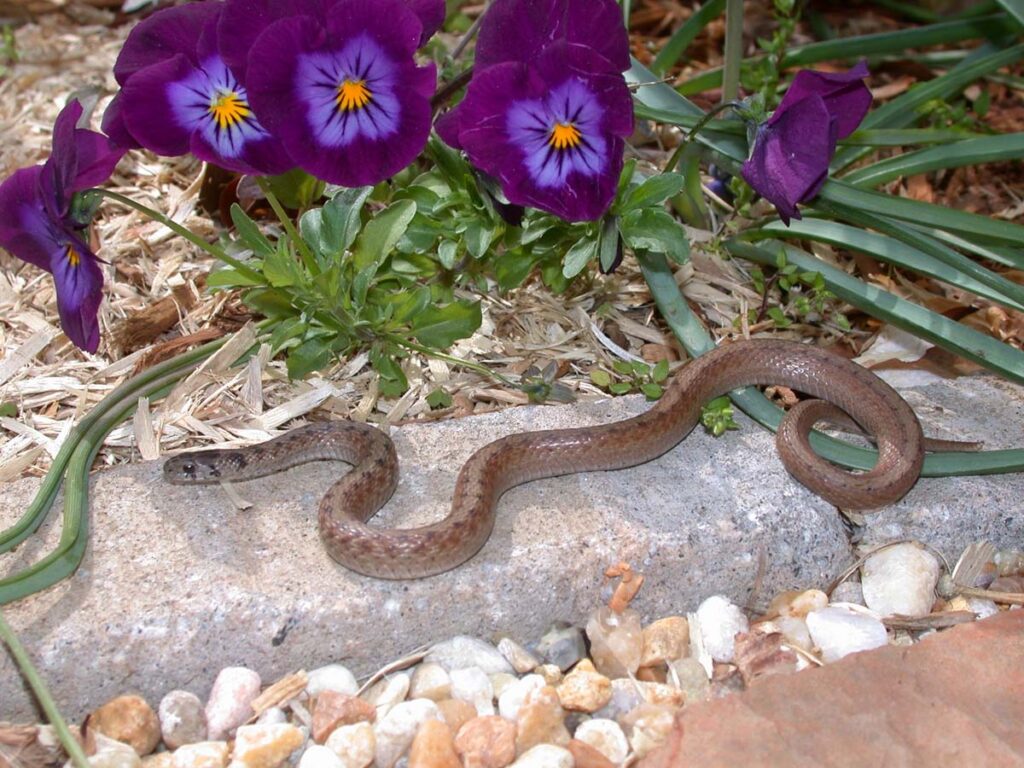When spring arrives, I get a steady flow of emails, usually with cell phone photos, about snakes someone wants identified. I recently received the following more generic question.
Q. I understand that most snakes are harmless, but I also know that six kinds of poisonous ones live in Georgia and Alabama. Based on your experience, what are the most common kinds of snakes people encounter? How many are dangerous?
A. Your comment about six venomous snakes is true for every coastal state from the Carolinas to Louisiana. Five are pit vipers (cottonmouth, copperhead and three rattlesnakes: eastern diamondback, canebrake and pigmy). The sixth is the eastern coral snake, in the same family as cobras and kraits. I have identified photos of all of them. The most common in suburban neighborhoods have been copperheads. Cottonmouths have mostly been around swamps and rivers.
However, no venomous snake comes close to being encountered as often as some of the 40-plus nonvenomous southeastern snakes. Two of them, one large and one small, are incontestably the snakes people see most often. The small snake, found in suburban neighborhoods, is the brown snake (aka Dekay’s brown snake), a great find on a walk in the woods or around the yard. They can hold their own as one of the most inoffensive of all U.S. snakes. They are completely harmless, even to pets. I have never heard of one biting a person. My grandsons pick them up all the time. As an added bonus for home gardeners, these little snakes eat slugs.
The most common big snakes frequenting towns and suburbs are rat snakes, sometimes called chicken snakes. The problem with identifying them is that they vary considerably in color and scale pattern in different regions. In coastal areas of the Carolinas, Georgia and most of Florida they can be yellow with dark, longitudinal stripes. From Virginia to New England they are usually black. From Alabama to Texas they may have gray or brownish bodies with darker blotches.
Even people familiar with the appearance of adult rat snakes in their region can be fooled by the completely different look of a baby rat snake with its pale gray body and black blotches on its back and sides. Rat snakes are mostly terrestrial but will enter water for brief periods. This is a harmless snake that eats lots of rats, mice and birds, the latter being a concern for people with bluebird houses. Rat snakes are powerful constrictors and good climbers, often being found in trees or shrubs. They even get into houses. Other harmless snakes often seen in residential areas are garter, king and ringneck snakes.
By far the most common snakes people encounter around lakes, streams and even backyard water features are northern or southern banded watersnakes, depending on the region. Although harmless, they will bite if picked up (as will birds and squirrels). I’ve been bitten by watersnakes many times when doing research on them and had no problems. But just watching them is the best approach. They are often mistaken for cottonmouths or copperheads because of their large, triangular-shaped head and the reddish-brown banding patterns on many individuals.
Almost anywhere in the United States, your chances that a snake you see will be venomous rather than harmless is low. Your odds of it biting you will disappear completely if you step away and watch it from a distance. None will chase you. Many serious snakebites in the United States each year could have been avoided entirely if someone had not picked up the snake or gotten too close trying to kill it.
Teach children to enjoy snakes but never to pick one up without supervision by a knowledgeable adult. One final rule: If someone is bitten by a venomous snake, do not resort to ineffective, potentially harmful old-school first-aid techniques. No cutting. No tourniquet. A set of car keys is your most valuable asset. Get the victim to a hospital as quickly as possible.
Send environmental questions to ecoviews@gmail.com
